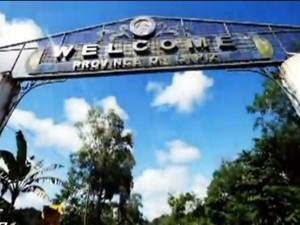Capture an ‘aswang’ on cam and win a prize
ROXAS CITY, Philippines—What “aswang”? There’s no such a thing here.
Tourism in Capiz has been reeling from its image as one of the areas in Western Visayas where the mythical vampire-like creature is said to have been devouring hapless preys since ages.
Capiz Governor Victor Tanco is waging a battle to change that eerie image.
“Now, we’re trying to erase that,” said Tanco. “Whenever we have visitors, the first thing that I will tell them is that ‘We’re not what you think we are’.”
He even challenged all “aswang believers” to capture the Philippine ghoul on camera.
Article continues after this advertisement“I will give a reward to anybody who can capture on camera and identify the aswang here,” Tanco said in jest to reporters in his residence here.
Article continues after this advertisementAn aswang is said to have a penchant for eating unborn babies and it could even turn into an animal as it scours mostly rural villages for preys.
Historian William Henry Scott said that Spanish colonists noted that the aswang was the most feared among the mythical creatures of the Philippines, even in the 16th century.
The province’s association with aswang was so bad that in the 1980s hotel guests in Capiz would even put garlic under their pillows.
Garlic is believed to scare away the creepy creature.
But things are getting brighter for the province, which is aggressively promoting itself not as the aswang, but as the seafood capital of the Philippines.
“I think we’re shedding that image,” Tanco said.
“We now belong to the top 20 domestic tourism locations here in the Philippines. That’s according to the record of the National Statistics Office and the Department of Tourism,” he said, adding, “That’s quite an achievement for us.”
“We are now hosting conventions, we have many festivals, and our main sales pitch is for people to come to Capiz just to eat. We are the seafood capital of the Philippines and many tourists come here because of our seafood,” he said.
Tanco also takes pride in having red tide-free waters in Capiz.
“Most of the seafood going to Manila, every day, are from Capiz,” he said, adding that they are being sold at upscale seafood markets in Metro Manila.
And fresh seafood is just one of Capiz’s assets. The province also boasts of tourist attractions like its centuries-old Catholic churches, caves, waterfalls, and its indigenous peoples.
